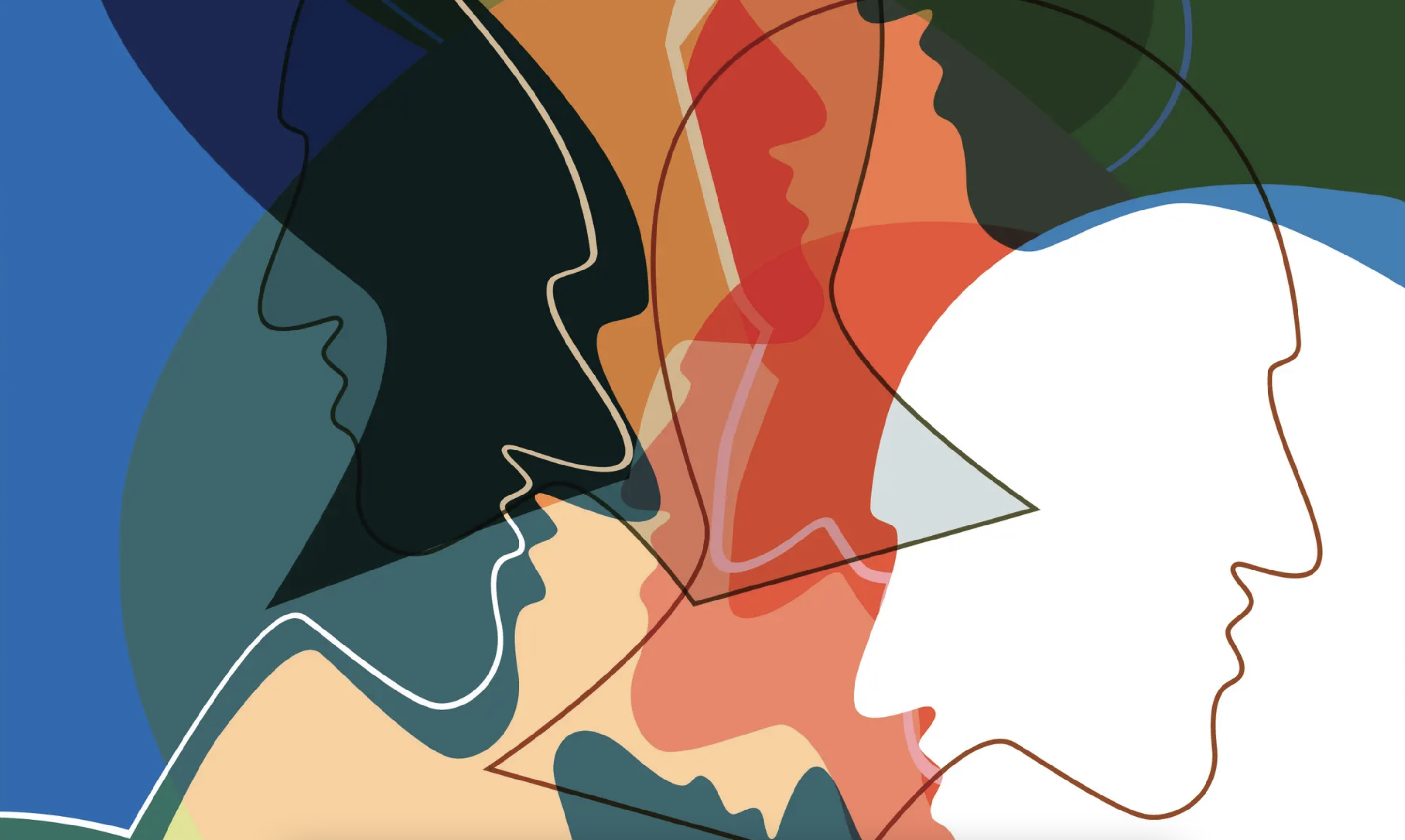What we’re getting wrong in the conversation about mental health

Increased use of psychiatric language means ordinary distress is being medicalised, while the seriously ill are not being heard
Many years ago, in the fading hours of a house party, I sat outside in the garden with an old friend. From inside came the distant thud of music and pockets of laughter – a thousand miles from the conversation we were having. My friend’s relationship had ended a few weeks previously, and that night his heartbreak was palpable and raw. He told me how disconnected he felt from the people inside the house, from his life, and then he said something that made my heart sink. “When I look into the future,” he said, avoiding eye contact, “I can’t see anything ahead of me.” At that moment – I thought – something became clear: he was clinically depressed.
Over the following days and weeks, I told my friend what I knew about the disorder, and the benefits of therapy and antidepressants, and encouraged him to go to the doctor. Even though he was reluctant, I was sure of how much he would benefit, so I persisted. But then, after about a month of checking in with him, something strange happened: he started to feel better, without any professional help at all. I distinctly remember the moment, a disintegration of what I thought I understood about mental health. Evidently, since my friend’s acute distress passed within a few weeks, he didn’t sit clearly in the territory of what we might call “mental illness”. But he certainly wasn’t mentally healthy for those weeks either. Instead, I realised, he sat somewhere in the vast grey plains between the two.
Everything we might think of as a “symptom” of mental disorder – worry, low mood, binge eating, delusions – actually exists on a continuum throughout the population. For each symptom, we vary in terms of how often we experience it, how severe it is, how easily we can control it, and how much distress it causes. In the terrain of mental health, there is no objective border to cross that delineates the territory of disorder. On top of this, the thoughts, feelings and behaviours that appear temporarily as a natural response to hardship and stress – like when we’re heartbroken – exactly mimic those that, should they persist, are defining features of mental disorders. So blurry are these boundaries that some psychologists argue we shouldn’t use the terms “illness” or “disorder” at all, and should only view all of this as matters of degree.
But this messy truth is not part of the public conversation about mental health. In the last decade or so, there has been a huge push to destigmatise mental illness and talk more openly about our distress – spearheaded by government and charity campaigns with taglines such as “It’s OK to not be OK” and “Every mind matters”. Broadly, this is a good thing. But when you attempt to smooth down a vast and thorny landscape into punchy hashtags and ad-friendly slogans, nuance gets lost – and there has been some collateral damage.
The current conversation can be summed up as follows: you should notice, scrutinise and seek help for negative psychological experiences. Of course, for some people, this message will be essential. For those who are suicidal, it can be lifesaving. But the message misfires when it implies that all negative states are problems, health problems – and things that can and should be fixed. That’s not how life works.
This is not to say people who fall below the threshold of a “disorder” should be silenced or ignored. I am vehemently opposed to the accusatory, dismissive language aimed at “snowflakes”. We do need to encourage people with milder or more transient difficulties to talk: first because any form of distress is horrible to experience alone, second because what seems mild may be the beginning of a more serious problem. But we need to figure out a way to talk about these negative emotions without sending the message that there’s something dysfunctional about you for feeling that way.
This means resisting the temptation to label all negative feelings with psychiatric terminology. When I was a psychology lecturer, I spoke to an undergraduate student about how she and her peers discussed their mental health, and she said that everyone in her year group – around 150 students – described themselves as having either depression or an anxiety disorder or both. From what we know from population-based studies, it’s nigh-on impossible that they all met criteria for these disorders. What seems more likely – in universities, but also in schools, online and in private conversations – is that individuals in more hospitable parts of the mental health terrain have started to co-opt terminology that really needs to be reserved for people trapped further in its depths.
This is no one’s fault. We all want language and labels to interpret our experiences, especially difficult ones, and thanks to the public conversation, psychiatric terms such as depression, post-traumatic stress disorder and social anxiety disorder are readily available. And they have power. Psychological distress, whatever its intensity, is hard, and diagnostic labels allow you to say: I’m suffering, my problem is real, and I need help.
But this framing, used inappropriately, can ironically compound people’s distress. Psychiatric labels provide meaning and legitimacy, but they can also be heavy and frightening, and can turn a fleeting problem into something bigger. Interpreting your low mood as a sign of depression, for example, can actually cause you to spiral into the very depression you’re worried about. We know this from research into mindfulness-based therapies for people with recurrent depression: learning to view low mood as “just” that, rather than as a start of a new depressive episode, can help reduce risk of relapse.
It also doesn’t help the people who actually do have depression: a devastating disorder that hijacks body and mind, leaving people unable to live the life they want or, in some cases, any life at all. When you call all low moods “depression”, the term loses any meaning. Back in 2001, the psychiatrist Derek Summerfield wrote, “To conflate normality and pathology devalues the currency of true illness”. There was barely even a public discussion about mental health back then. His point is more important now than ever.
In fact, it seems that many people talking about their mental disorders now feel compelled to use qualifiers such as “severe” depression and “extreme” PTSD, just to try and get heard. But true depression is severe; PTSD is extreme. This is the sad irony of these campaigns, which were surely originally designed to give voice to people with mental illness. The public conversation as it stands therefore seems to be underserving people across the spectrum: some people unnecessarily label themselves as disordered, which can make them feel worse, while others who are seriously unwell are still not being heard.
We need to recalibrate. None of this is to say we need to stop the public conversation: we just need to press pause, and slightly change direction. First, we need to tell more stories about individuals with severe and debilitating mental disorders, so we clearly understand what these disorders involve and what can help. Second, we need to promote the idea that a great number of distressing psychological experiences can be managed – sometimes with professional help – without needing to reach for the psychiatric dictionary. This is not meant to be critical but to empower, and reassure: don’t feel you have to take on a psychiatric diagnosis, or consider there’s something medically wrong with you, unless you really do find that framing helpful.
We need to gain confidence in talking about mental health and illness not as a neat dichotomy but a messy, nuanced spectrum. We all like simple categories and answers, but the sooner we recognise that mental health doesn’t play this game, the better. Remember those vast grey plains. The individuals who roam this space will still need care and support, and professional help might indeed be warranted – but the language of disorder might not be.
It’s a lesson I have had to teach myself. The next time one of my friends is heartbroken – which will happen, of course, as night follows day – I’ll take a different approach. I’ll still discuss the value of getting professional help; I’ll still remember that relationship breakdowns can and do contribute to mental disorders and even suicide in some individuals. I’ll still keep checking in, and being a good friend. But I’ll also hold another possibility in mind: that with a bit of talking and time, their pain will pass on its own. That we may be in the realm not of psychiatric disorder, but rather in the tangled landscape of our rich and painful lives.
- Lucy Foulkes is an honorary lecturer in psychology at UCL, and author of Losing Our Minds: What Mental Illness Really Is – and What It Isn’t
- In the UK, the charity Mind is available on 0300 123 3393 and Childline on 0800 1111. In the US, Mental Health America is available on 800-273-8255. In Australia, support is available at Beyond Blue on 1300 22 4636, Lifeline on 13 11 14, and at MensLine on 1300 789 978
Adolescent Mental Health
This article was published on Dr. Sophia Khalique Medical Practice's blog...
Students are back to school, now what?
The past year has been challenging. The pandemic has affected the lives...
Benefits of group & individual therapy
As seen in the Simon, a 42-year-old graphic designer, recently undertook...
Would you like to join our mailing list?
From time to time we may notify you of new blogs on the website, or share thoughtful, relevant articles and content, aimed at informing and helping people.
© 2020 Likeminds Psychotherapy and Coaching - London | Glossary | Privacy Policy | Site by Diagonal


